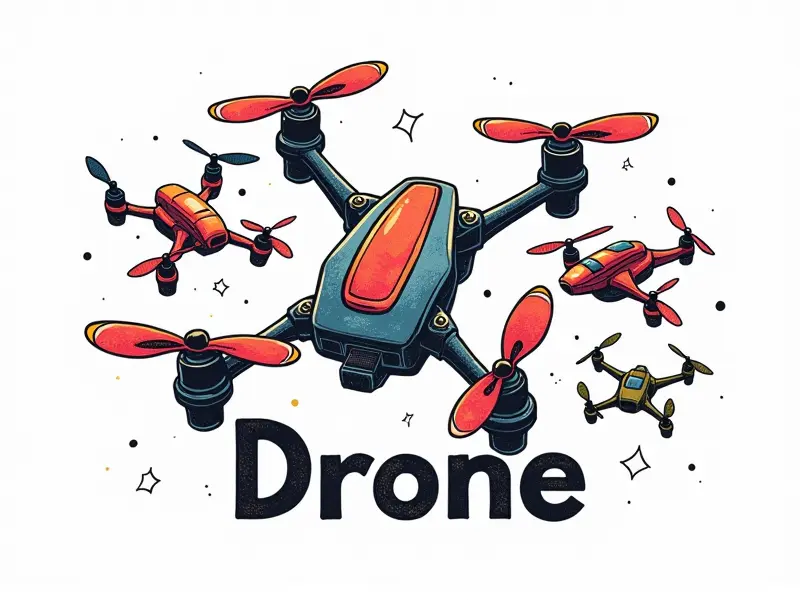How do RC race controllers work?

Remote control (RC) race controllers are the heart of any competitive radio-controlled racing setup. Whether you're a seasoned racer or just starting out, understanding how these controllers work is crucial to mastering your craft and achieving top speeds on the track.
Inside RC Race Controllers: How They Work
The inner workings of an RC race controller are complex yet fascinating. At its core, an RC race controller consists of several key components:
- Transmitter (TX): The TX sends signals to the receiver in your RC vehicle.
- Receiver (RX): The RX receives and processes signals from the transmitter, converting them into commands for the vehicle's servos and motors.
- Servos: These small electric motors control the steering and throttle of your RC car or truck.
- Battery: Powers both the TX and RX units to ensure smooth operation.
Understanding RC Race Controller Functionality
To fully grasp how an RC race controller functions, it's essential to understand the basic principles of radio frequency (RF) communication. When you move a stick on your transmitter, it sends out a signal via RF waves. This signal is picked up by the receiver in your RC vehicle and translated into mechanical movements.
The quality of this communication can significantly impact performance. Factors such as interference from other devices or poor antenna placement can degrade signal strength and responsiveness.
Breaking Down RC Race Controller Tech
Modern RC race controllers incorporate advanced technology to enhance control and precision:
- Dual Rates: Allows you to adjust the sensitivity of your controls for different driving conditions or skill levels.
- Exponential Control: Provides smoother transitions between inputs, making it easier to fine-tune your vehicle's performance.
- Voltage Sensing: Monitors battery voltage and adjusts power output accordingly to prevent damage from over-discharge.
Essential Guide to RC Race Controller Operations
To get the most out of your RC race controller, follow these essential tips:
- Calibrate Your Transmitter: Proper calibration ensures accurate and responsive control over your vehicle.
- Check Antenna Placement: Ensure that antennas are properly positioned to avoid signal interference.
- Use High-Quality Batteries: Invest in batteries with high capacity and low internal resistance for optimal performance.
RC Racing: The Role of Controllers
The controller is the primary interface between you and your RC vehicle. It allows you to steer, accelerate, brake, and fine-tune settings such as throttle curves and steering ratios. A well-calibrated and responsive controller can mean the difference between winning and losing in competitive racing.
Mastering RC Race Controllers for Speed
To achieve top speeds and precision control, mastering your race controller is essential:
- Practice Regularly: Spend time honing your skills with different settings to find what works best for you.
- Tune Your Vehicle: Adjust throttle curves and steering ratios based on track conditions and vehicle setup.
- Stay Updated: Keep up-to-date with the latest advancements in RC technology to stay ahead of the competition.
Demystifying RC Race Controller Technology
The technology behind RC race controllers continues to evolve, incorporating features like telemetry and Bluetooth connectivity. Telemetry allows you to monitor real-time data such as speed, battery voltage, and engine temperature directly from your controller, providing valuable insights for tuning and performance optimization.
RC Racing 101: Controller Functionality Explained
For beginners, understanding the basics of RC race controller functionality is crucial:
- Learn Basic Controls: Familiarize yourself with the primary functions such as throttle and steering.
- Experiment with Settings: Try out different dual rates and exponential settings to see how they affect your vehicle's performance.
- Watch Tutorials: There are many online resources available that can help you learn the ins and outs of RC racing controllers.
What Makes RC Race Controllers Special?
RC race controllers stand out due to their specialized features designed for high-performance applications. These include:
- Advanced Programming Capabilities: Some controllers allow you to program custom settings and profiles tailored to specific tracks or vehicles.
- Enhanced Durability: Built with rugged materials to withstand the rigors of competitive racing.
- Integrated Safety Features: Many controllers come equipped with safety features like low-voltage cut-off and throttle lockout to prevent accidents.
How Do FPV Drone Controllers Operate?
First-person view (FPV) drone controllers operate on similar principles but have unique characteristics tailored for aerial racing:
- Video Transmission: In addition to RF control signals, FPV drones transmit video feed directly to your controller or goggles.
- Multichannel Operation: Some controllers support multiple channels for simultaneous operation of different vehicles.
- Built-in GPS: Many high-end FPV drone controllers incorporate GPS technology for precise location tracking and autonomous flight modes.
Unpacking the Tech Behind RC Race Controllers
The tech behind RC race controllers is a blend of cutting-edge electronics, software engineering, and mechanical design. Key components include:
- Microprocessors: Handle complex calculations for signal processing and control algorithms.
- Sensors: Monitor various parameters such as battery voltage, temperature, and orientation to provide real-time data feedback.
- User Interface: Intuitive controls and displays make it easy to access critical settings and information while racing.
Conclusion
Mastery of RC race controllers is essential for any serious racer. By understanding the inner workings, advanced features, and optimal usage techniques, you can unlock your full potential on the track. Whether you're a beginner or an experienced pro, there's always more to learn about these powerful devices that bring speed and excitement to the world of radio-controlled racing.

